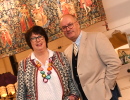Contact Seller
Malcolm Eglin Antiques
Tel07966 398123Please quote Antiques Atlas.


 Antique Edwardian Oak Armchair / Desk Chair
Antique Edwardian Oak Armchair / Desk Chair
 French Louis XVI Style Gilt Wood Opera Chairs
French Louis XVI Style Gilt Wood Opera Chairs
 Antique William IV Mahogany Hall Chair c.1835
Antique William IV Mahogany Hall Chair c.1835
 Art Nouveau Architects Swivel Chair 1890c
Art Nouveau Architects Swivel Chair 1890c
 Arts And Crafts Elbow/desk Chair In Oak
Arts And Crafts Elbow/desk Chair In Oak
 Large Button Back Salon Chair, in Burgundy Leather
Large Button Back Salon Chair, in Burgundy Leather
 Pair of Antique Swedish Satin Birch Biedermeier Armchairs
Pair of Antique Swedish Satin Birch Biedermeier Armchairs
 Set of 4 Edwardian Sheild Back Inlaid Chairs
Set of 4 Edwardian Sheild Back Inlaid Chairs
 Pair of Italian Painted and Gilded Armchairs
Pair of Italian Painted and Gilded Armchairs
 An English Oak Metamorphic Childs High Chair
An English Oak Metamorphic Childs High Chair
 Pair of Large Open Armchairs
Pair of Large Open Armchairs
 Chippendale Mahogany Side Chair
Chippendale Mahogany Side Chair
Non UK callers :
+44 7966 398123
Gothic Revival child's Chair in style of Pugin.


A really well proportioned small, Gothic Revival small rosewood chair or child's chair in the style of the early Arts and Craft movement. It is beautifully made with typical cut out patterns.
It has the original needlepoint upholstery, which as expected is slightly distressed but still in reasonable condition for the age, we have just replaced the cord surrounding the needlepoint material. This a delightful example of a quality handmade piece from this period.
It is stamped with letters on underside of chair with what appear to be "L W"
Maximum height 27.5 inches maximum width of seat 13 inches
Augustus Pugin was the leading figure in the revival of the Gothic style which became increasingly important throughout the nineteenth century, gradually replacing Classical styles in popularity. The Arts and Crafts movement has its roots in the Gothic revival and this page gives a brief guide to Gothic style and its influence.Pugin applied his vision to the whole field of design. As well as his work in the design of buildings he designed antique furniture, and from his architectural practice he also designed and produced stained glass, metalwork, textiles and antique jewellery. The Gothic revival architects who followed Pugin, notably William Burges and George Edward Street carried on the new approach to antique furniture design, taking responsibility for designing the building and its internal fittings and furnishings.
The revival of Gothic style was also the work of John Ruskin, an architectural critic who attacked classical architecture because of its aim for perfection and for its demands upon the men who were required, as slaves to build it. For Ruskin, Gothic was the architecture of free craftsmen. Their work being a natural and noble activity where the result might not have a perfect machine finish but it was an honest creation. This notion of natural and honest imperfection was called 'Savageness' and was very influential in the Arts and Crafts movement. Ruskin believed also that human needs should dictate how buildings were designed and craftsmen should be free to adapt and to change rather than follow a rigid style. This principal of 'Changefullness' was also an important influence on Arts and Crafts thinking.
From the Gothic revival we can see important influences on the Arts and Crafts Movement. First, the high value placed on craftsmanship creativity and the view that work should be meaningful in itself. Secondly the emphasis on creative design and importance of functional and purpose rather than decoration. Thirdly the integrity and honesty of construction, which relies upon the natural beauty of materials used in construction. In terms of design, important influences included the view that the structure should be exposed so the ingenuity in creating and holding the structure together can be shown honestly and appreciated. The decoration relied largely on the natural beauty of the materials and also on hand crafted work, with organic forms as decoration, reflecting the handiwork of God.
A wider appeal for the Gothic revival developed in the latter half of the nineteenth century as the interpretation of Gothic was much debated. For those in the avant garde, seeking relief from the oppressive classical tradition the new 'Gothick ' was very appealing as it evoked a medieval sense of barbarism, of heroic endeavour and of the heartiness of 'Merry England' in the middle ages. The single most important figure in the development of Arts and Crafts from this time on was, of course, William Morris. WE CAN BE CONTACTED ANYTIME ON MOBILE 07966 398123
FRIENDLY COURTEOUS, CONFIDENTIAL SERVICE SERVICE.
OUR BUSINESS
We have a wonderful selection of Fine Period Furniture, Good Early Oak and other Decorative Antique Home Furnishings. We are based in the Heart of Northumberland by Hadrian's Roman Wall.
DELIVERIES
We are pleased to offer a delivery service to any UK mainland address, most deliveries are done by ourselves unless you choose to use your own carrier. Please Note Prior to using the 'Buy Now' button, please contact us to organise delivery costs.
Please contact us without obligation for a delivery quote.
PAYMENT
We accept payment by PayPal, credit card, debit card, cheque or cash.
SellerMalcolm Eglin Antiques
View all stock from
Malcolm Eglin Antiques

 By appointment only
By appointment only
Hexham
Nothumberland,
England
Tel : 07966 398123
Non UK callers : +44 7966 398123
It has the original needlepoint upholstery, which as expected is slightly distressed but still in reasonable condition for the age, we have just replaced the cord surrounding the needlepoint material. This a delightful example of a quality handmade piece from this period.
It is stamped with letters on underside of chair with what appear to be "L W"
Maximum height 27.5 inches maximum width of seat 13 inches
Augustus Pugin was the leading figure in the revival of the Gothic style which became increasingly important throughout the nineteenth century, gradually replacing Classical styles in popularity. The Arts and Crafts movement has its roots in the Gothic revival and this page gives a brief guide to Gothic style and its influence.Pugin applied his vision to the whole field of design. As well as his work in the design of buildings he designed antique furniture, and from his architectural practice he also designed and produced stained glass, metalwork, textiles and antique jewellery. The Gothic revival architects who followed Pugin, notably William Burges and George Edward Street carried on the new approach to antique furniture design, taking responsibility for designing the building and its internal fittings and furnishings.
The revival of Gothic style was also the work of John Ruskin, an architectural critic who attacked classical architecture because of its aim for perfection and for its demands upon the men who were required, as slaves to build it. For Ruskin, Gothic was the architecture of free craftsmen. Their work being a natural and noble activity where the result might not have a perfect machine finish but it was an honest creation. This notion of natural and honest imperfection was called 'Savageness' and was very influential in the Arts and Crafts movement. Ruskin believed also that human needs should dictate how buildings were designed and craftsmen should be free to adapt and to change rather than follow a rigid style. This principal of 'Changefullness' was also an important influence on Arts and Crafts thinking.
From the Gothic revival we can see important influences on the Arts and Crafts Movement. First, the high value placed on craftsmanship creativity and the view that work should be meaningful in itself. Secondly the emphasis on creative design and importance of functional and purpose rather than decoration. Thirdly the integrity and honesty of construction, which relies upon the natural beauty of materials used in construction. In terms of design, important influences included the view that the structure should be exposed so the ingenuity in creating and holding the structure together can be shown honestly and appreciated. The decoration relied largely on the natural beauty of the materials and also on hand crafted work, with organic forms as decoration, reflecting the handiwork of God.
A wider appeal for the Gothic revival developed in the latter half of the nineteenth century as the interpretation of Gothic was much debated. For those in the avant garde, seeking relief from the oppressive classical tradition the new 'Gothick ' was very appealing as it evoked a medieval sense of barbarism, of heroic endeavour and of the heartiness of 'Merry England' in the middle ages. The single most important figure in the development of Arts and Crafts from this time on was, of course, William Morris. WE CAN BE CONTACTED ANYTIME ON MOBILE 07966 398123
FRIENDLY COURTEOUS, CONFIDENTIAL SERVICE SERVICE.
OUR BUSINESS
We have a wonderful selection of Fine Period Furniture, Good Early Oak and other Decorative Antique Home Furnishings. We are based in the Heart of Northumberland by Hadrian's Roman Wall.
DELIVERIES
We are pleased to offer a delivery service to any UK mainland address, most deliveries are done by ourselves unless you choose to use your own carrier. Please Note Prior to using the 'Buy Now' button, please contact us to organise delivery costs.
Please contact us without obligation for a delivery quote.
PAYMENT
We accept payment by PayPal, credit card, debit card, cheque or cash.
Price The price has been listed in British Pounds.
Conversion rates as of 8/MAY/2025. Euro & Dollar prices will vary and should only be used as a guide.
Always confirm final price with dealer.
Category Antique Furniture
> Antique Armchairs
Date Gothic Revival
Mid 19th Century Antiques Material Rosewood
Origin English
Item code as162a175 / 023230
Status Sold
£595.00 
$791.95 
€702.16 

$

€

Conversion rates as of 8/MAY/2025. Euro & Dollar prices will vary and should only be used as a guide.
Always confirm final price with dealer.
View all stock from
Malcolm Eglin Antiques

 By appointment only
By appointment onlyHexham
Nothumberland,
England
Tel : 07966 398123
Non UK callers : +44 7966 398123
You may also be interested in
 Antique Edwardian Oak Armchair / Desk Chair
Antique Edwardian Oak Armchair / Desk Chair
 French Louis XVI Style Gilt Wood Opera Chairs
French Louis XVI Style Gilt Wood Opera Chairs
 Antique William IV Mahogany Hall Chair c.1835
Antique William IV Mahogany Hall Chair c.1835
 Art Nouveau Architects Swivel Chair 1890c
Art Nouveau Architects Swivel Chair 1890c
 Arts And Crafts Elbow/desk Chair In Oak
Arts And Crafts Elbow/desk Chair In Oak
 Large Button Back Salon Chair, in Burgundy Leather
Large Button Back Salon Chair, in Burgundy Leather
 Pair of Antique Swedish Satin Birch Biedermeier Armchairs
Pair of Antique Swedish Satin Birch Biedermeier Armchairs
 Set of 4 Edwardian Sheild Back Inlaid Chairs
Set of 4 Edwardian Sheild Back Inlaid Chairs
 Pair of Italian Painted and Gilded Armchairs
Pair of Italian Painted and Gilded Armchairs
 An English Oak Metamorphic Childs High Chair
An English Oak Metamorphic Childs High Chair
 Pair of Large Open Armchairs
Pair of Large Open Armchairs
 Chippendale Mahogany Side Chair
Chippendale Mahogany Side Chair







